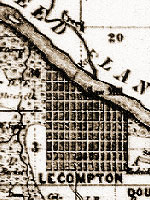Cottonwood Ranch State Historic Site
John Fenton Pratt had no idea when he started building his ranch that it would someday tell the story of his family and his native Yorkshire, England. Visitors can tour the grounds and house of this relatively unchanged rural ranch set in the South Solomon River Valley of the High Plains. Through Pratt’s photo collection, stained glass windows, and examples of Yorkshire architecture, visitors will learn about businessman and sheep rancher Pratt, other early Kansas ranchers, and their stories.
The site offers exhibits, tours, and educational and recreational programs.
